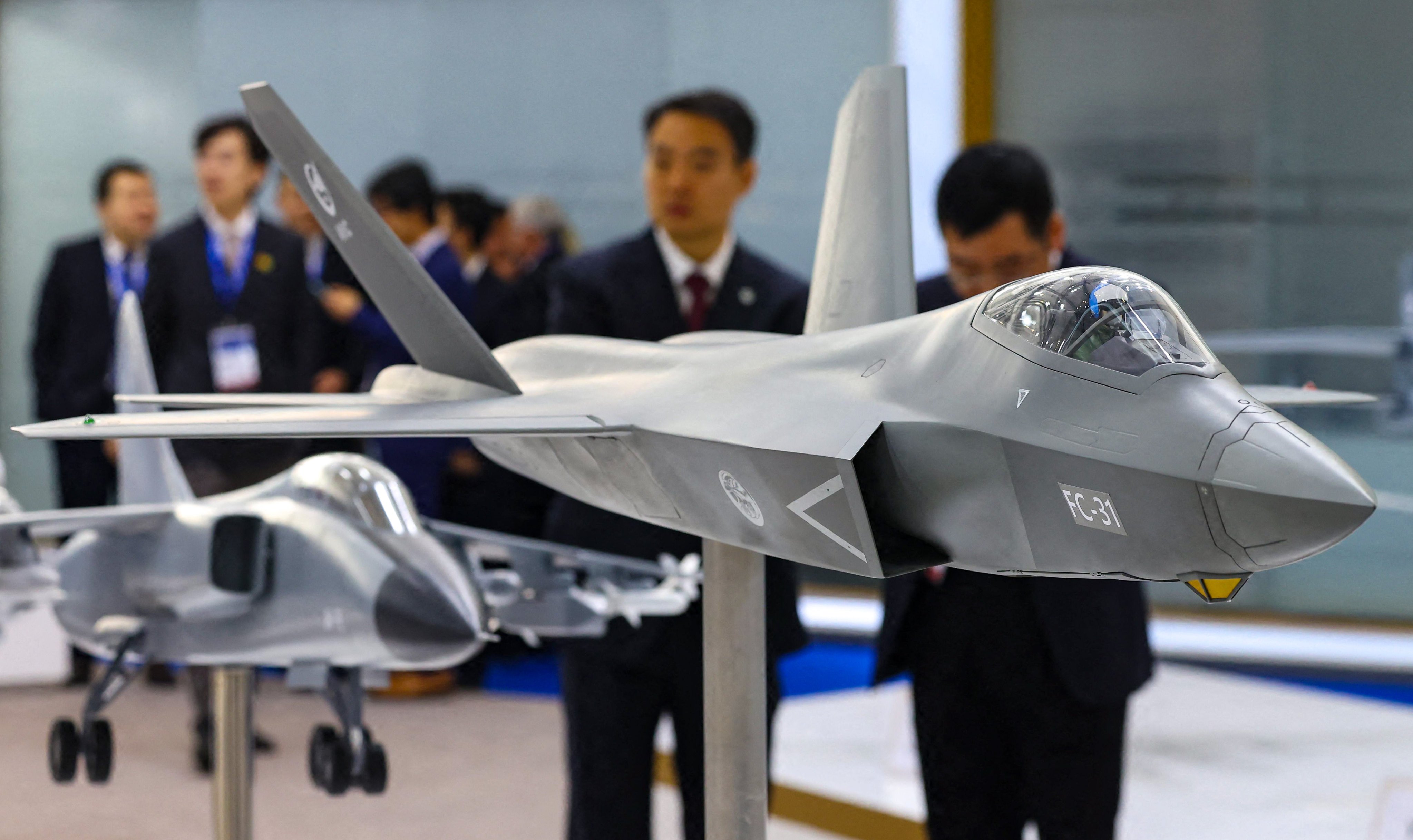SOURCE: AFI


In a significant development for South Asian airpower dynamics, Pakistan is set to begin inducting the Shenyang FC-31 ‘Gyrfalcon’ multirole stealth fighter aircraft into its air force, according to a senior Pakistani government official cited by Janes on June 4, 2025. The acquisition of these Chinese-made fifth-generation stealth fighters, also referred to as the J-35 in some contexts, marks a strategic move by the Pakistan Air Force (PAF) to counter India’s growing aerial capabilities, particularly as the Indian Air Force (IAF) faces a squadron strength shortfall and awaits its indigenous Advanced Medium Combat Aircraft (AMCA) by 2035.
The Janes report indicates that deliveries of the FC-31 are expected to commence within months, with PAF pilots and technicians already undergoing training in China to operate and maintain the aircraft. A senior Pakistani official confirmed to Janes that the FC-31s will be equipped with the advanced PL-17 beyond-visual-range air-to-air missile (BVRAAM), boasting a reported range of 400 km, enhancing the PAF’s ability to conduct long-range strikes and maintain air superiority. This acquisition follows Pakistan’s preview of the PL-15 missile during the May 2025 India-Pakistan clashes, where debris recovered in India confirmed its use by PAF’s JF-17 Block III fighters.
The FC-31, developed by China’s Shenyang Aircraft Corporation, is a twin-engine stealth fighter designed to compete with fifth-generation platforms like the U.S. F-35 and China’s own J-20. While earlier models supplied to Pakistan are less advanced than the J-20, the FC-31’s stealth capabilities, advanced radar, and integration with long-range munitions like the PL-17 provide a significant upgrade over Pakistan’s current fleet of JF-17s, F-16s, and older Mirage III/V aircraft. Posts on X suggest that the PAF could induct the FC-31 in batches of six over the next 12–18 months, potentially totaling 30–36 aircraft, enabling deep-strike capabilities into Indian territory and serving as a “quarterback” for missile-armed JF-17s and J-10Cs.
This move comes in the wake of the May 2025 India-Pakistan conflict, dubbed Operation Sindoor by India, during which the IAF launched precision strikes using BrahMos-A missiles, destroying six PAF fighter jets, two AWACS aircraft, a C-130 transport, and several drones and missiles. Pakistan’s air defenses, including Chinese-supplied HQ-9 systems, struggled to counter India’s low-flying, high-speed missiles, exposing vulnerabilities in the PAF’s capabilities. The FC-31’s induction is seen as a response to these losses and a bid to close the technological gap with India, which is bolstering its fleet with Rafale jets and planning to acquire 114 multirole fighter aircraft (MRFA) like the F-21 or additional Rafales to address its dwindling 31-squadron strength against a sanctioned 42.
The FC-31’s integration into the PAF could shift the regional balance, particularly as India’s AMCA program remains a decade away from operational deployment. Reports indicate that Pakistan is also exploring a joint production line for the Turkish KAAN combat aircraft, further signaling its intent to modernize its air force with advanced platforms. The FC-31’s stealth features and long-range missile capabilities could challenge India’s air defenses, including the S-400 system, which proved effective against Pakistani projectiles during the recent conflict.
However, skepticism surrounds the FC-31’s readiness and Pakistan’s claims. The aircraft remains under development, with limited public data on its performance, and its stealth capabilities are considered inferior to the J-20 or F-35. Posts on X highlight concerns about the PAF’s ability to rapidly integrate a new platform, given logistical and training challenges. Additionally, a controversial claim by Pakistani MNA Barrister Muhammad Raza Hayat Hiraj, alleging that PAF Chief Air Chief Marshal Zaheer Ahmad Babar Sidhu flew a combat mission into Indian airspace for 18 minutes during the May clashes, has been widely debunked, underscoring the prevalence of misinformation in the region’s tense narrative.
India, aware of Pakistan’s acquisition, is accelerating its own modernization efforts. Defence Minister Rajnath Singh has approved a competitive execution model for the AMCA, with prototypes expected by 2026–2027. The IAF’s recent success in Operation Sindoor, including bypassing Pakistan’s Chinese air defenses in a 23-minute mission, demonstrates its operational edge, but the FC-31’s induction could complicate future engagements. Analysts note that China’s support, including satellite repositioning and air defense recalibration during the conflict, underscores Beijing’s strategic investment in Pakistan’s military capabilities.
NOTE: AFI is a proud outsourced content creator partner of IDRW.ORG. All content created by AFI is the sole property of AFI and is protected by copyright. AFI takes copyright infringement seriously and will pursue all legal options available to protect its content.